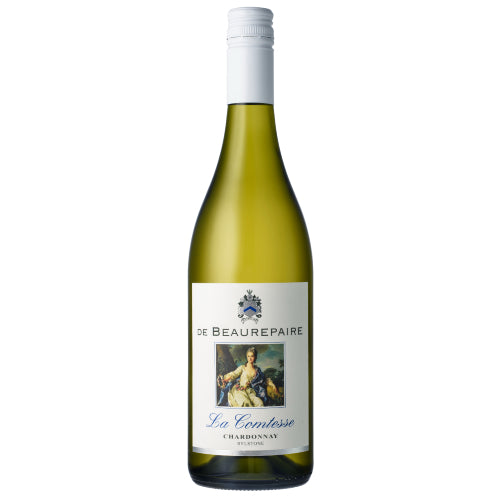2022 'La Comtesse' Chardonnay
$35.00
Please select all options.
DESCRIPTION
An elegant, fresh, fruit driven Chardonnay. Light and lively with well-balanced acidity producing a clean lengthy finish. Aromas of stone fruit, white peach and hint of melon. Lightly oaked. Limited intervention is the goal.
HERITAGE
Label painting is of our ancestor, Comtesse Marie-Louise de Beaurepaire, by Grand Master Louis Michel Van Loo whilst he was director of École Royale des Élèves Protégés, in 1766. It was his entry for that year’s Paris Salon. Van Loo studied under his father Jean-Baptiste van Loo in Turin and Rome and won the Académie Royale de Peinture et de Sculpture in Paris in 1725, after which he became a court painter to the Kings of Spain and France. The painting was part of the Rothschild family collection stolen by the Nazis and destined for Fuhrer Museum in Lunz before being rescued at the end of WW2.
TERROIR
The vineyard is located above Rylstone in the Central Ranges GI of NSW (40km southeast of Mudgee, 70km northeast of Bathurst). It was planted in 1998 by Richard & Janet de Beaurepaire, with a mixture of Bordeaux, Rhône, and Burgundy varieties with the intention of selling most of the grapes whilst organically growing wine production. The decision to plant the vineyard at this location over other established winegrowing regions (including family winemaking operations in the Yarra Valley) was due to the similarity of the terroir to Burgundy – the home of the de Beaurepaire family. The vineyard is in a mountain valley, 150 kilometres from the coast in the Great Dividing Range. It is planted on North facing slopes rising from the Cudgegong River to an altitude of 650m. Geologically, the vineyard is planted on an Ordovician-era (450 MY ago) coral reef with shallow sandy and sandy-loam soils on limestone. The limestone was mined nearby until recently by Kandos Cement. The altitude, distance from ocean and poor heat retention of the soil and limestone, creates an inland continental climate as cool as Central Otago in New Zealand and Tasmania in Australia during the growing season with extreme diurnal variation – late Sept/Oct Budburst, Jan/Feb Veraison and March/April HHHarvest.
VINEYARD
Vintage Conditions: A relatively cool vintage with decent rainfall. Some early frosts reduced yields in early budburst varieties. The summer was relatively cool, with rainfall ensuring very active canopy management to mitigate disease risks. Another great year for acidity.
Harvest (yield): Machine harvested on 13 March 2022 with a baumé of 12.3. Yield was approximately 4.3t/ha (~26hl/ha). Chardonnay sourced from C Block (clone I10V5), with an average vine age of 19 years. The soils are very shallow (down to 30cm in spots), predominantly free-flowing sand with a little clay over limestone bedrock moderately sloping down to the river.
VINIFICATION
Pressing was very slow and gentle on the destemmed fruit. Juices from the last pressing were not retained. Fermentation started cool (16 degrees) and was undertaken using native (“wild”) yeasts. Once fermentation was 90% complete it was transferred to a mixture of stainless-steel tanks and oak barrels. No malolactic fermentation.
AGING
15% in New French (Taransaud) barriques for 9 months with the balance in steel tank for 10 months. The oak was fine grained and medium charred. Lees stirred every two weeks for wine in barrels.
Analysis: pH 3.3, TA 7.5g/l, VA 0.27g/l, RS 0.6g/l
TASTING NOTES
Aromas of stone fruit, white peach and melon. Lemon and Lime on the palate supported by vanilla from the French oak and a lengthy finish.
VIN ET GASTRONOMIE
Ideally suited to all kinds of shellfish (especially oysters but also scallops and lobster), pasta dishes with a creamy sauce, low fat fish like Mahi Mahi or Tuna, a vegetarian terrine, or smooth vegetable-based soups. Also, well suited as a veranda wine with some creamy cheeses.
WINE TIPS
Cellaring Potential: 10 to 15 years
Serving Temperature: 12 degrees C / 54 degrees F
Varietal mix: 100% Chardonnay
Alcohol: 12.3%
Bottles produced (cases): 12,696 (1,058 cases)
GI: Central Ranges (Rylstone), NSW


